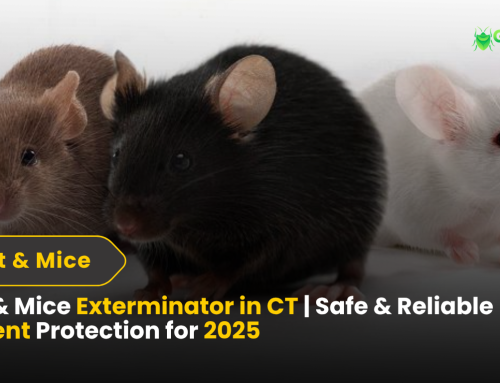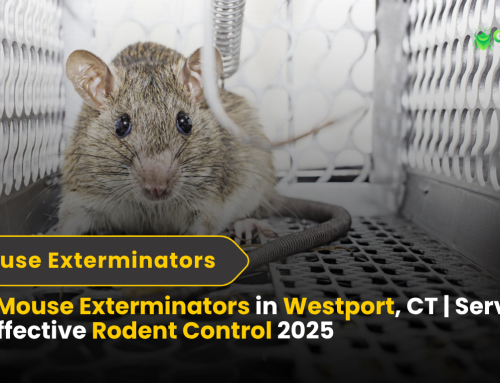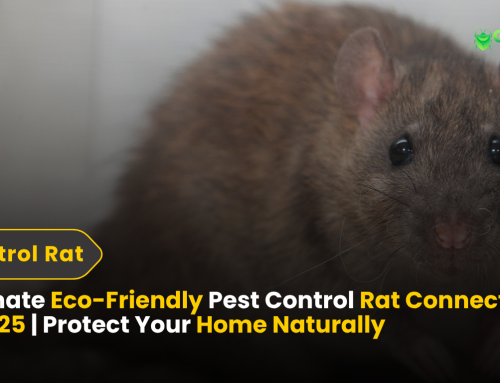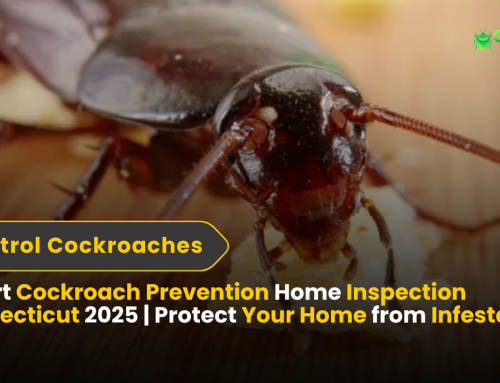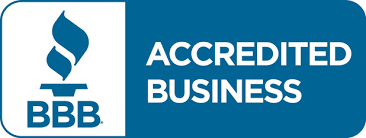Commercial Pest Control Services in CT: Complete Guide for Connecticut Businesses in 2025
When you’re running a business in Connecticut, whether in Greenwich, Stamford, New Canaan, Wilton, Darien, Westport, or beyond, maintaining a clean, pest-free environment is crucial. From customer perception to regulatory compliance, pests can pose serious risks. That’s why investing in commercial pest control services in CT isn’t just a smart choice—it’s a critical business decision.
In this comprehensive guide, we’ll explore everything Connecticut businesses need to know about commercial pest control. You’ll learn why pest management matters, what kinds of pests are common in CT, how to choose a quality provider, and how Green Pest Management CT can help you protect your business.
Why Pest Control Matters for Connecticut Businesses
1. Safeguarding Your Reputation
Customers expect clean, safe places. One sighting of a cockroach or rodent can rapidly damage your reputation. For service-intensive businesses—such as restaurants in Greenwich or hotels in Stamford—the stakes are even higher. Using professional commercial pest control services in CT sends a clear message: you prioritize customer health and satisfaction.
2. Ensuring Health & Safety
Pests are not just unpleasant — they can carry disease. Rodents, cockroaches, and flies are common vectors of bacteria, viruses, and allergens. In a commercial setting, they can:
-
Contaminate food
-
Spread pathogens like Salmonella
-
Trigger asthma in sensitive individuals
-
Cause structural damage that may lead to physical hazards
By working with expert pest control providers, you protect both employees and customers from these health risks.
3. Regulatory & Compliance Risks
In Connecticut, businesses—especially those in food service, healthcare, hospitality, or retail—must comply with strict health and safety standards. Violations due to pest infestations can lead to fines, shutdowns, or reputational loss. Professional pest control helps ensure compliance with:
-
Connecticut Department of Public Health rules
-
FDA food safety standards
-
OSHA workplace safety guidelines
-
Industry-specific sanitation requirements (HACCP, GMP, etc.)
4. Preventing Costly Damage
Certain pests, like termites or carpenter ants, don’t just spread disease — they can damage your property. Electrical wiring, wooden structures, insulation — all can be compromised. Repairing that damage is far more expensive than investing in preventive commercial pest control.
5. Minimizing Operational Disruptions
Infestations often escalate quickly, causing business interruptions. Emergencies may force you to close sections of your business (like a restaurant kitchen) for treatment. Regular, proactive pest control avoids those surprises and keeps operations running smoothly.
Understanding the Pest Threat Landscape in Connecticut
Connecticut’s climate, geography, and urbanization create a unique pest pressure for commercial properties. Understanding local risks helps business owners plan more effectively.
Common Commercial Pests in CT
Here are some of the most frequent pests Connecticut businesses face:
| Pest Type | Why They Are a Problem in Commercial Settings |
|---|---|
| Rodents (Mice, Rats) | Thrive in basements, storage areas, kitchens; damage wiring, contaminate food. |
| Cockroaches | Attracted to food prep areas, kitchens, dumpsters; spread bacteria. |
| Ants | Carpenter ants (structural damage), pavement ants, sugar ants in food businesses. |
| Flies (House flies, Fruit flies) | Attracted to garbage, food waste; high contamination risk. |
| Termites / Carpenter Ants | Structural damage over time; especially a risk in older buildings. |
| Spiders | May be unsightly; webs interfere with guest experience; some bite. |
| Stored-Product Pests | Indian meal moths, grain beetles, flour beetles in warehouses or food storage. |
| Bed Bugs | For hospitality (hotels, inns), these are a hospitality nightmare. |
Local Risk Factors
-
Coastal & Suburban Environments: In towns like Darien or Westport, proximity to woods or coastlines can increase the risk of moisture-related pests like ants and termites.
-
Urban Business Centers: In Stamford or Greenwich, high foot traffic, dense buildings, and shared walls can foster rodent or cockroach spread.
-
Older Construction: Many Connecticut businesses occupy historic or aging buildings where pests may exploit cracks in foundations, basements, or attics.
Commercial Pest Control vs. DIY: Why Professional Matters
Many business owners ask: “Can’t I handle pests myself?” While DIY methods may work for small, residential problems, commercial pest control demands a different level of expertise.
Limitations of DIY Pest Control
-
Short-Term Fixes: Over-the-counter traps or sprays can reduce activity temporarily, but they often don’t address the root cause.
-
Safety Risks: Incorrect application of pesticides can pose health hazards or violate local regulations.
-
No Documentation: DIY methods don’t provide professional reporting, which is often required for health inspections.
-
Ineffective Against Complex Infestations: Severe infestations (rodents, termites, stored-product pests) usually require specialized tools, products, and strategies.
-
No Integrated Approach: DIY often lacks the holistic strategy of Integrated Pest Management (IPM), which emphasizes prevention, sanitation, monitoring, and minimal chemical use.
Advantages of Professional Commercial Pest Control Services in CT
-
Expert Identification: Professionals can correctly identify pest species and life stages.
-
Integrated Pest Management (IPM): Experts use IPM strategies combining chemical, biological, and physical controls.
-
Customized Plans: Treatment tailored based on building layout, business type, risk level.
-
Certified Technicians: Licensed, trained in commercial-grade treatments.
-
Regulatory Compliance: Service logs, reports, and record-keeping support inspections.
-
Preventive Focus: Not just “treat & go” — ongoing monitoring, sealing, exclusion work.
-
Emergency Response: Rapid treatment options when pests are discovered.
What to Expect from Commercial Pest Control Services in CT
When you hire a professional provider in Connecticut, like Green Pest Management CT, you should expect a structured, transparent, and effective service. Here’s how a typical commercial pest control program works:
Step 1: Comprehensive Inspection
-
Technicians will assess interior and exterior premises: kitchens, storage, walls, ceilings, landscaping, dumpsters.
-
They identify pest entry points, water sources, and conditions conducive to infestations.
-
They document findings with photos, maps, and recommendations.
Step 2: Customized Treatment Plan
Based on the inspection, they craft a tailored strategy that includes:
-
Pest species and population levels
-
Proposed treatments (baiting, traps, exclusion)
-
Frequency (monthly, quarterly, seasonal)
-
IPM methods: sanitation, structural fixes, monitoring stations
Step 3: Implementation
-
Treatments are scheduled around your business hours to minimize disruption.
-
Use of EPA-registered, low-toxicity products where possible.
-
Technicians may seal cracks and gaps, install rodent bait stations or cockroach monitors, set fly traps, or apply perimeter treatments.
Step 4: Monitoring & Follow-Up
-
Regular visits (e.g., monthly or quarterly) to inspect treatment efficacy.
-
Maintenance of traps and monitors.
-
Adjustments to the plan based on changing pest pressure.
Step 5: Documentation & Reporting
-
Detailed service reports after each visit.
-
Activity logs, maps, and treatment summaries — useful for regulatory inspections.
-
Preventive recommendations (sanitation improvements, exclusion work).
Step 6: Preventive Maintenance
-
Long-term strategies to keep pests out include sealing, sanitation, moisture control.
-
Ongoing education for staff to maintain a pest-free environment.
How Commercial Pest Control Is Customized for Connecticut Business Areas
Different areas in Connecticut experience different pest pressures. A high-quality commercial pest control provider tailors services to local conditions.
Commercial Pest Control Greenwich
Greenwich is known for upscale businesses, restaurants, and historic buildings. Businesses in Greenwich often benefit from:
-
Discreet treatments tailored to maintain a clean, high-end look.
-
Preventive programs for rodents and ants drawn by landscaping and wooded lots.
-
Documentation to maintain high health standards.
Commercial Pest Control Stamford
As one of CT’s largest business hubs, Stamford has density, foot traffic, and shared walls, which means:
-
High risk of rodent and cockroach transfer between properties.
-
Necessity for regular IPM, especially in food service and retail.
-
Strategic placement of monitors in common areas, basements, and bathrooms.
Commercial Pest Control New Canaan
New Canaan businesses face pest challenges from suburban landscapes:
-
Carpenter ants from nearby trees and older homes.
-
Rodents seeking shelter in building foundations.
-
Tailored exterior perimeter treatments and seasonal checks.
Commercial Pest Control Wilton
Wilton’s wooded environment can bring:
-
Wood-destroying insects (termites, carpenter ants).
-
Spiders in quiet office areas.
-
Exterior exclusion work to prevent structural infestation.
Commercial Pest Control Darien
Darien’s humid coastal climate increases the prevalence of:
-
Moisture-loving pests (ants, flies).
-
Sealant and drainage solutions to reduce pest-friendly environments.
-
Scheduled inspections to catch problems before they escalate.
Commercial Pest Control Westport
Westport businesses benefit from:
-
Frequent seasonal monitoring due to proximity to water and green areas.
-
Specialized fly control for restaurants and retail operations.
-
Continuous IPM to manage both common pests and seasonal surges.
Industries That Benefit from Commercial Pest Control in CT
Here’s how different sectors in Connecticut leverage professional commercial pest control:
1. Food Service & Restaurants
-
Heavy health code scrutiny
-
High risk of cockroaches, rodents, flies
-
Food preparation, storage, waste zones need regular inspection
2. Hospitality & Lodging
-
Hotels, inns, bed & breakfasts (especially in Stamford, Greenwich, Darien) face bed bugs, ants, rodents.
-
Guest satisfaction within a pest-free environment is critical.
-
Documentation for regulatory inspections and guest assurances.
3. Healthcare Facilities
-
Hospitals and clinics cannot tolerate contamination.
-
Rodent, insect, and fly control must be ongoing and discreet.
-
Strict adherence to health standards and reporting.
4. Office Buildings & Corporate Campuses
-
Rodents or ants on break rooms or shared walls.
-
Pest control promotes a safe, productive work environment.
-
Preventive IPM avoids disruption.
5. Retail & Grocery Stores
-
Stored-product pests in stockrooms
-
Customer-facing areas need to remain visually clean and safe
-
Regular contract services reduce the risk of infestations
6. Warehouses & Distribution Centers
-
Large storage areas are vulnerable to stored-product pests
-
Rodents may chew packaging, contaminate inventory
-
Regular inspections and monitoring stations keep pest risk low
7. Education & Institutional Facilities
-
Schools, universities, and libraries require pest-free environments.
-
Preventive strategies to avoid disruptions in operations.
-
Low-toxicity agents for safety around children.
Key Features to Expect from a Top-Tier Commercial Pest Control Provider
When you partner with a professional for commercial pest control services in CT, here are the features that distinguish quality providers:
-
Licensed, Insured Technicians – Professionals should be certified and maintain insurance.
-
Local Expertise – Familiarity with Connecticut pests, climate, and building types.
-
Integrated Pest Management (IPM) – Use of multi-pronged strategies that minimize chemical use.
-
Eco-Friendly Practices – Use of low-toxicity products, gel baits, mechanical control, exclusion.
-
Flexible Scheduling – Overnight or off-hours visits to reduce business disruption.
-
Detailed Reporting – Written summaries, maps, pest-activity logs, compliance-ready documentation.
-
Preventive Maintenance Plans – Regular checkups, seasonal treatments, structural exclusion.
-
Emergency Services – Rapid response if a sudden infestation or sighting occurs.
-
Client Education – Training staff on sanitation, pest-friendly conditions, and early warning signs.
How Green Pest Management CT Supports Your Business
At Green Pest Management CT, we understand the unique pest pressures Connecticut businesses face. Our services are designed to align with your needs, and we link seamlessly with specialized pages on our site:
-
To learn about our dedicated commercial pest control approach, visit our Commercial Pest Control Service Page.
-
For businesses that also have residential or mixed-use spaces, we offer Residential Pest Control.
-
If rodents are your top concern, explore our targeted Rodent Control solutions.
-
For ant infestations — especially structural or sugar-seeking species — we provide expert Ant Control.
-
If cockroaches are your problem, our Cockroach Control program is designed for commercial properties.
-
Want to reach out? We’re just a click away at our Contact Page to schedule an assessment or emergency visit.
Cost Considerations: What Does Commercial Pest Control in CT Cost?
Pricing for commercial pest control services in CT varies widely depending on:
-
Business size (square footage)
-
Structure type (single building vs. campus)
-
Pest pressure and species
-
Frequency of service (monthly, quarterly, seasonal)
-
Required treatments (monitoring, exclusion, chemical, physical)
-
Local labor rates and accessibility
Return on Investment (ROI):
While costs may seem significant, the ROI is strongly positive:
-
Reducing food loss in a restaurant
-
Avoiding health code fines
-
Preventing expensive structural repairs
-
Minimizing downtime
-
Preserving brand reputation
In many cases, investing in preventive commercial pest control pays for itself within months.
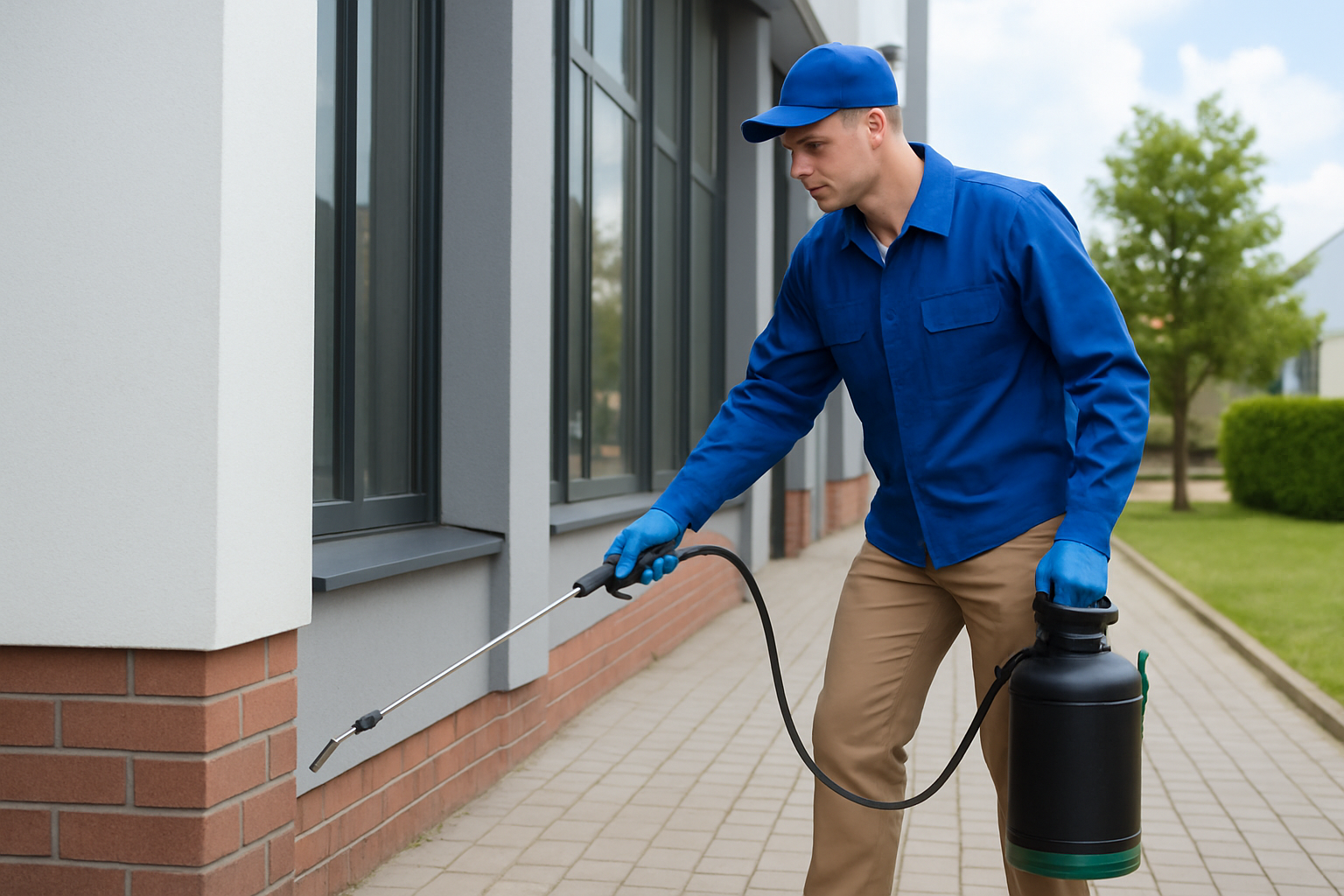
Best Practices & Preventive Measures for Connecticut Businesses
Professional pest control is essential, but businesses also play a role in prevention. Here are practical tips to reduce pest pressure:
-
Maintain Excellent Sanitation
-
Clean floors, counters, and storage areas daily
-
Seal trash bins and clean dumpster areas
-
Reduce standing water and repair leaks promptly
-
-
Seal Entry Points
-
Inspect for cracks, gaps, and holes around the building
-
Use rodent-resistant materials (metal mesh, foam sealants)
-
Keep doors and windows properly sealed
-
-
Monitor & Record
-
Use simple logbooks or software for pest sightings
-
Train staff to report droppings, nests, or insect activity
-
-
Optimize Landscaping
-
Trim shrubs and trees away from building walls
-
Maintain drainage to prevent standing water
-
Use gravel or concrete barriers where possible
-
-
Educate Employees
-
Teach staff about early signs of infestation
-
Encourage proper food storage and labeling
-
Share pest prevention checklists
-
-
Establish Partnership With a Reputable Provider
-
Ensure routine scheduling
-
Demand transparency (reports, mapping, walk-throughs)
-
Promote accountability and responsiveness
-
Common Mistakes Businesses Make — And How to Avoid Them
Even with the best intentions, some pitfalls can undermine your pest control strategy. Here’s what to watch out for:
-
Waiting Until There’s a Problem: Reactive pest control is less effective and more expensive than preventive programs.
-
Hiring the Cheapest Provider Without Vetting: Low cost may mean poor quality or inadequate coverage.
-
Skipping Documentation: Without reports, you may fail inspections or miss trend patterns.
-
Neglecting Exclusion Work: Treating pests without sealing entry points is short-sighted.
-
Over-relying on Chemical Treatments: Overuse can cause resistance or environmental issues; IPM is more sustainable.
-
Ignoring Staff Training: Employees are the front lines for detection — if they’re untrained, infestations can grow unnoticed.
How Green Pest Management CT Supports Your Business
At Green Pest Management CT, our mission is to provide best-in-class commercial pest control services in CT tailored to your business and location. Here’s how we deliver:
A. Expert Technicians with Local Knowledge
Our team knows the common pests in Greenwich, Stamford, Darien, Wilton, New Canaan, and Westport — from rodents seeking shelter under historic foundations to ants drawn by coastal humidity.
B. Integrated Pest Management (IPM) Approach
We rely on IPM, combining low-toxicity products, physical exclusion, and habitat modification to provide safe, effective, long-term pest control.
C. Flexible Scheduling
We offer after-hours appointments so your business operations are not disrupted. Whether you need treatments at night for restaurants or maintenance for offices, we work around you.
D. Detailed Documentation & Reporting
Every visit comes with a service report, including site maps, pest activity logs, treatment details, and future recommendations — useful for regulatory compliance.
E. Preventive Maintenance Plans
We build long-term programs that include monthly or quarterly check-ins, seasonal treatments, and structural exclusion work, reducing the likelihood of resurgence.
F. Emergency Response
If pests appear suddenly, we provide rapid-response options — helping you eliminate problems before they escalate.
G. Education & Support
We educate your staff on sanitation best practices, pest-aware habits, and early detection, empowering your team to be part of the solution.
Real-World Case Studies (Hypothetical Examples)
Note: These are illustrative examples based on common scenarios in CT — anonymized for confidentiality.
Case Study 1: Stamford Restaurant
-
Situation: A popular mid-size restaurant in Stamford was experiencing persistent cockroach sightings, especially in the kitchen and storage.
-
Action: We conducted a comprehensive inspection, placed discreet gel baits and monitor stations, and sealed cracks under baseboards and equipment.
-
Outcome: Within three visits, pest activity dropped sharply. After six months, no further customer complaints, and health inspections passed with no violations.
Case Study 2: Greenwich Boutique Hotel
-
Situation: A boutique hotel owner in Greenwich was concerned about ants in rooms and rodents in the basement.
-
Action: We implemented IPM — installed rodent stations, used ant barrier treatments, and guided housekeeping staff on waste management.
-
Outcome: Over a year, guest satisfaction remained high, with zero pest-related reviews. The hotel passed all regulatory inspections smoothly.
Case Study 3: Westport Warehouse & Distribution Center
-
Situation: A mid-size distribution center in Westport was fighting stored-product pests (meal moths & beetles) in their inventory.
-
Action: We set up pheromone traps, performed targeted treatments, and educated warehouse staff on better storage practices.
-
Outcome: Infestation levels dropped significantly, reducing inventory loss and preventing further contamination.
Frequently Asked Questions (FAQ)
Here are some of the most common questions we hear from Connecticut business owners considering commercial pest control:
Q1: How often should we schedule commercial pest control for our business?
A1: Frequency depends on your industry, risk level, and building layout. Many high-risk businesses (like restaurants) benefit from monthly service, while others may do well with quarterly or seasonal plans.
Q2: Are the pest control products safe for our customers and staff?
A2: Yes. We use EPA-registered, low-toxicity treatments and follow IPM principles to minimize risk. Our technicians are licensed and trained to apply products safely.
Q3: What pests are most common in Connecticut commercial buildings?
A3: In CT, businesses commonly face rodents (mice/rats), cockroaches, ants, flies, termites, and stored-product pests. The exact mix depends on location (e.g., Woody suburbs vs. coastal towns).
Q4: Can you guarantee complete eradication of pests?
A4: While no provider can guarantee zero pest presence forever, our integrated programs aim to reduce pest activity to negligible, manageable levels. Continuous monitoring, preventive maintenance, and exclusion work significantly lower risk.
Q5: What if we have a pest emergency (e.g., rodent infestation or cockroach outbreak)?
A5: We offer emergency-response services. Contact us via our Contact Page, and we can often respond quickly to contain and eliminate the problem.
Q6: Do we need pest control if we just moved into a commercial space?
A6: Yes. New or renovated buildings may have hidden entry points or pre-existing pest issues. An initial inspection and treatment plan helps you start on a clean slate.
Q7: Is preventive pest control more cost-effective than reactive control?
A7: Absolutely. Investing in a scheduled, proactive program typically costs less over time than paying for damage repairs, health violations, or service interruptions caused by unmanaged pest infestations.
Q8: How do we know if our provider is credible?
A8: Look for licensed, insured technicians, detailed reports, transparent pricing, local experience (especially in CT), IPM-based strategies, and good references or case studies.
Conclusion & Call to Action
Pests are more than a nuisance—they’re a serious business risk. For commercial properties in Connecticut, from Greenwich and New Canaan to Stamford, Darien, Westport, and Wilton, investing in professional commercial pest control services in CT is not just recommended — it’s essential.
By partnering with a reputable, locally experienced provider like Green Pest Management CT, you gain:
-
Proactive, preventive protection
-
Customized IPM-based strategies
-
Regulatory-compliant documentation
-
Rapid emergency response
-
Staff education and long-term peace of mind
Take action today. Visit our Commercial Pest Control Page to request a free assessment or schedule your first inspection. If you have any questions, reach out via our Contact Page. Let us help you safeguard your business, your customers, and your reputation.

